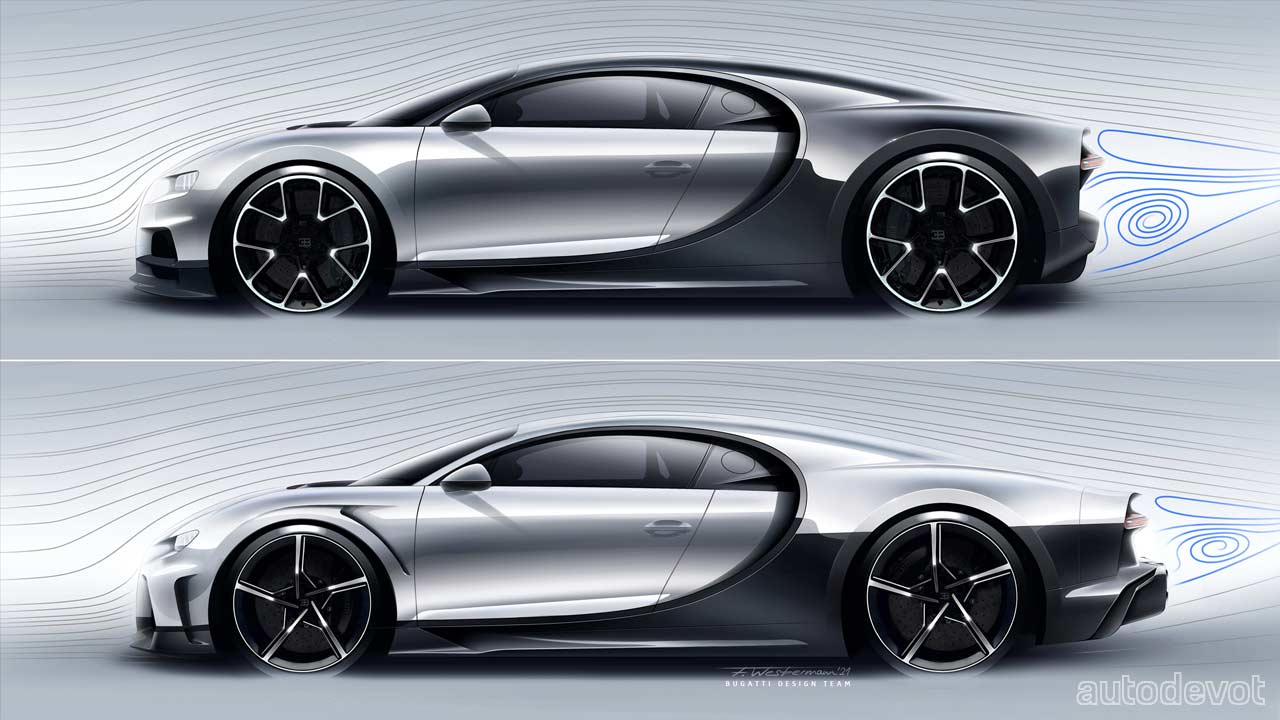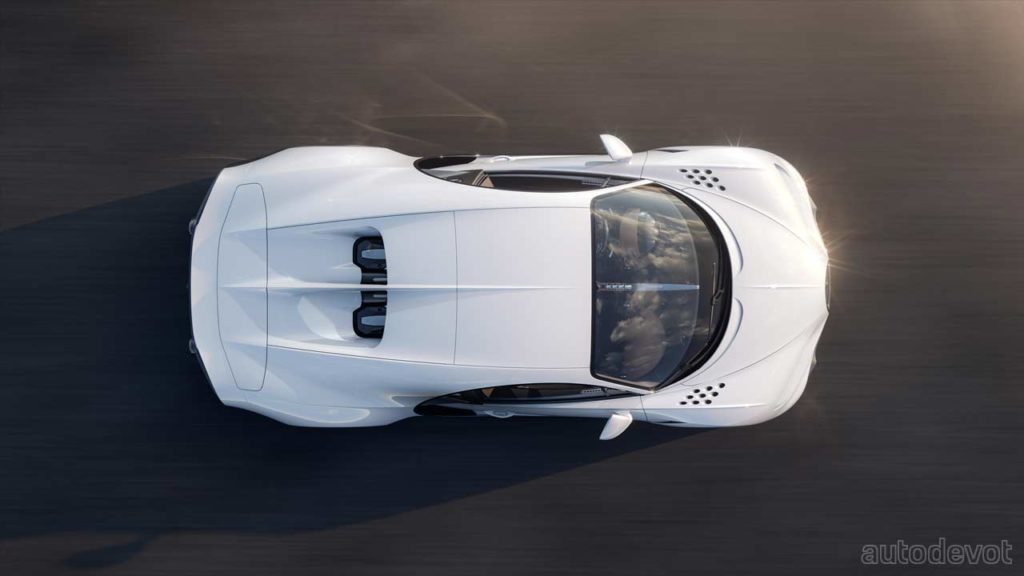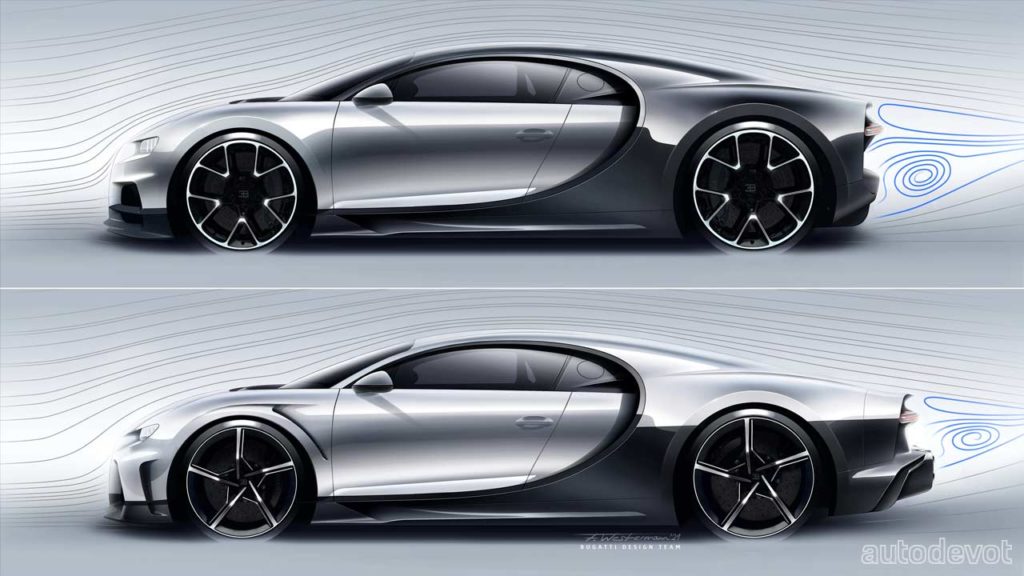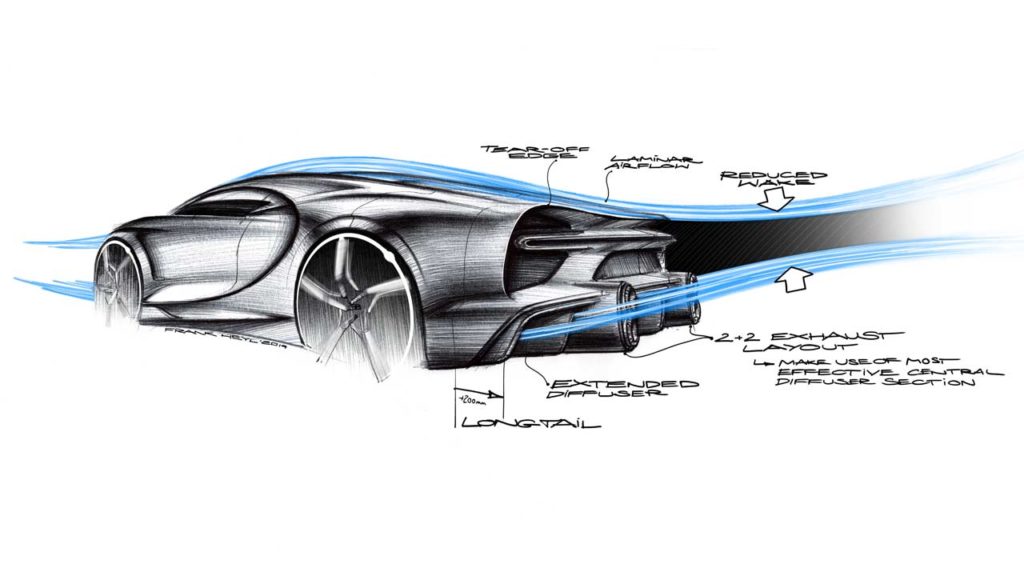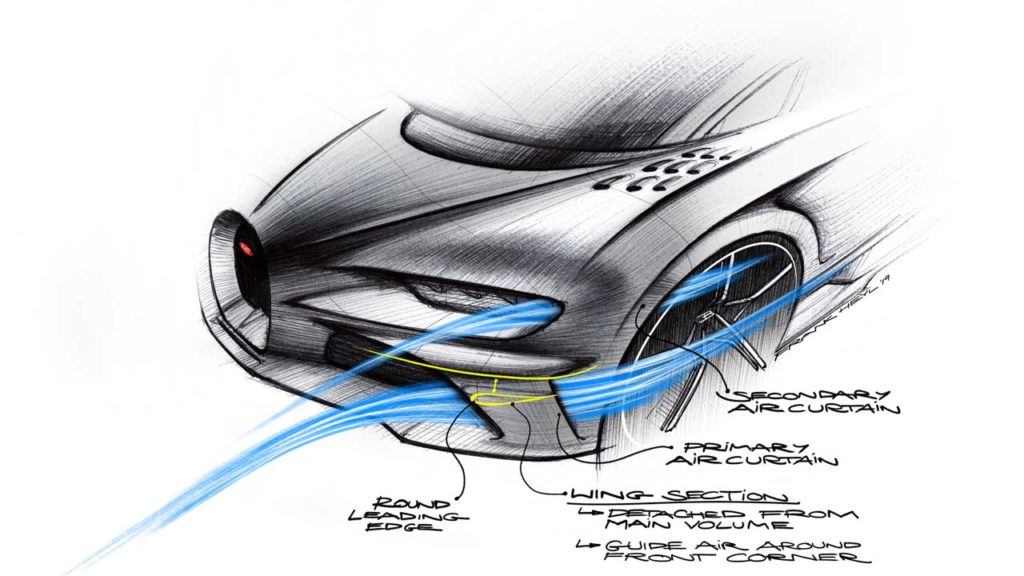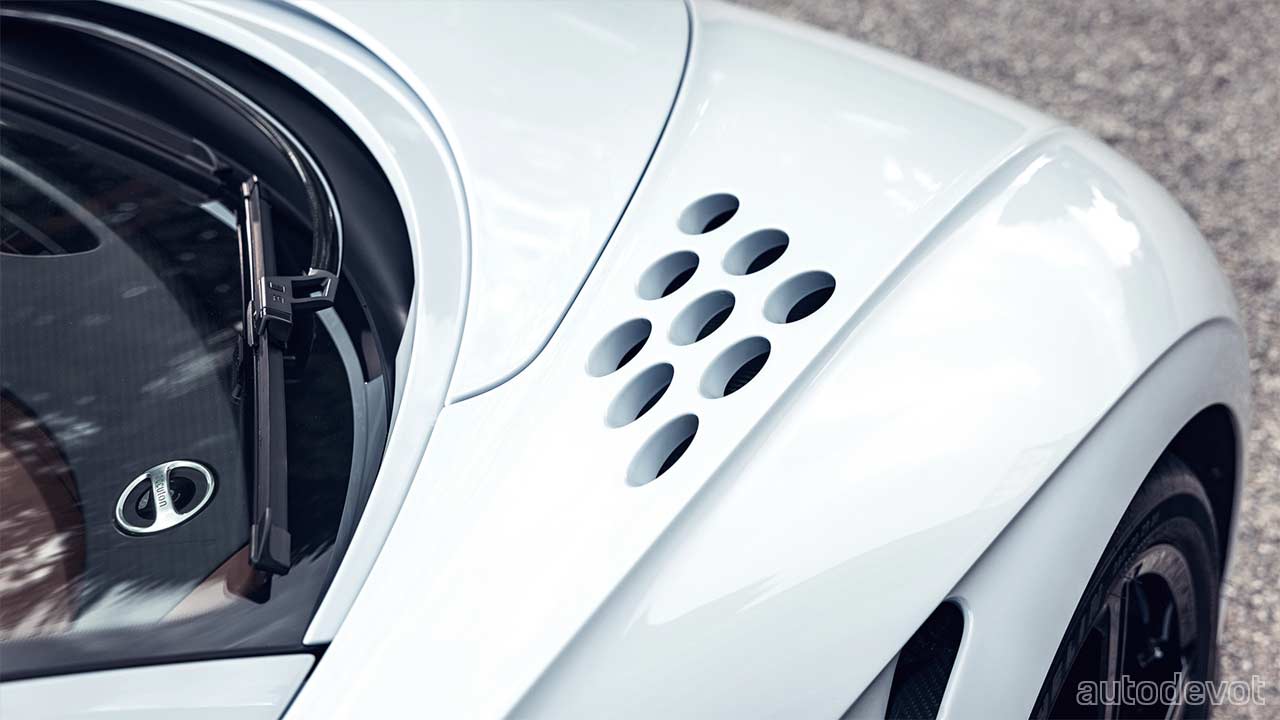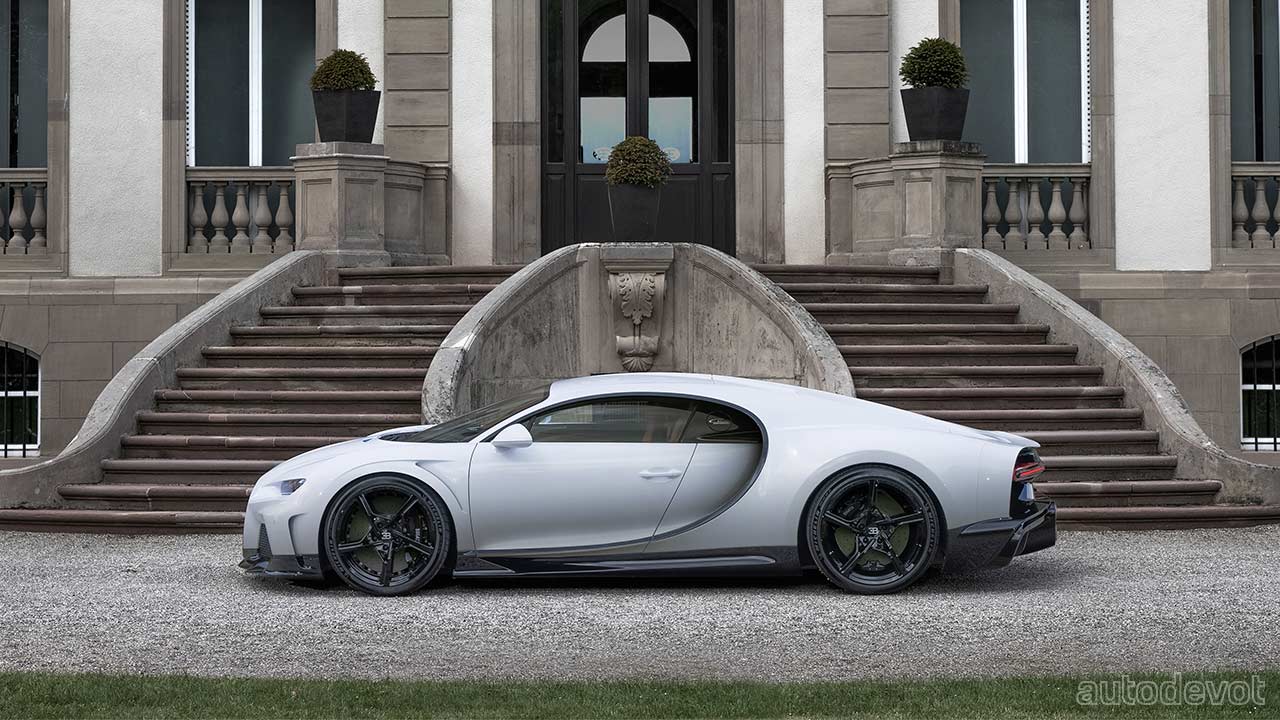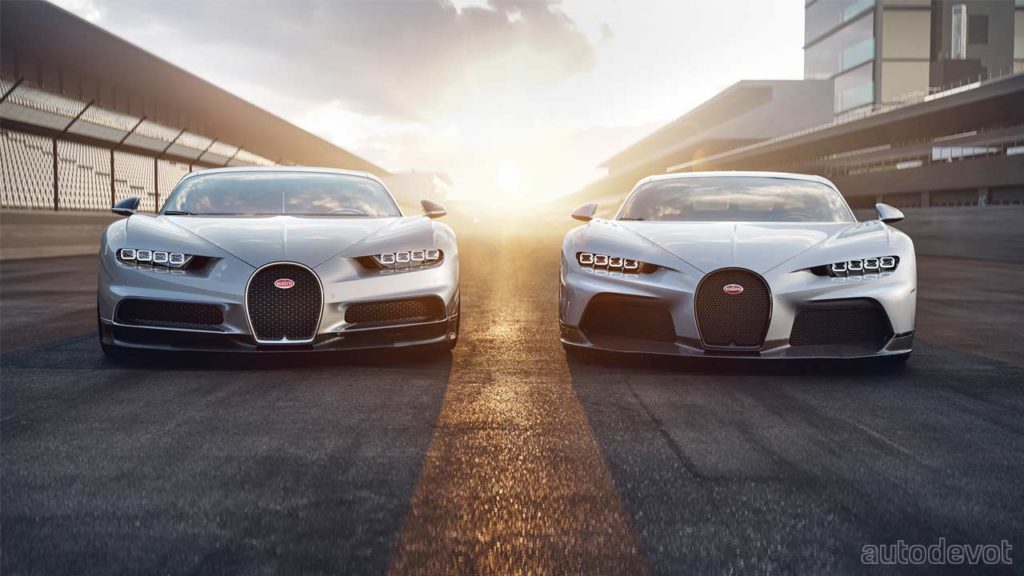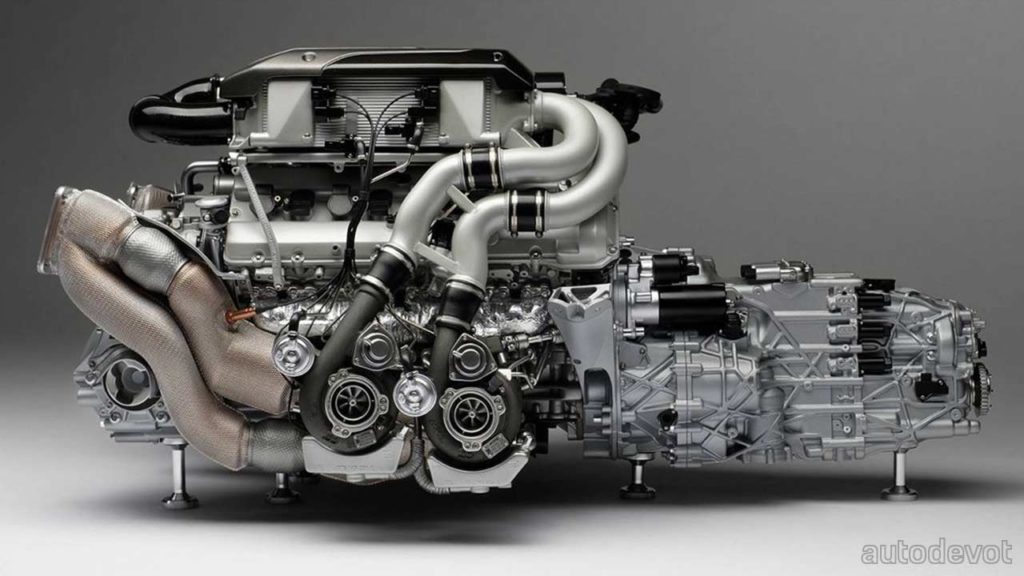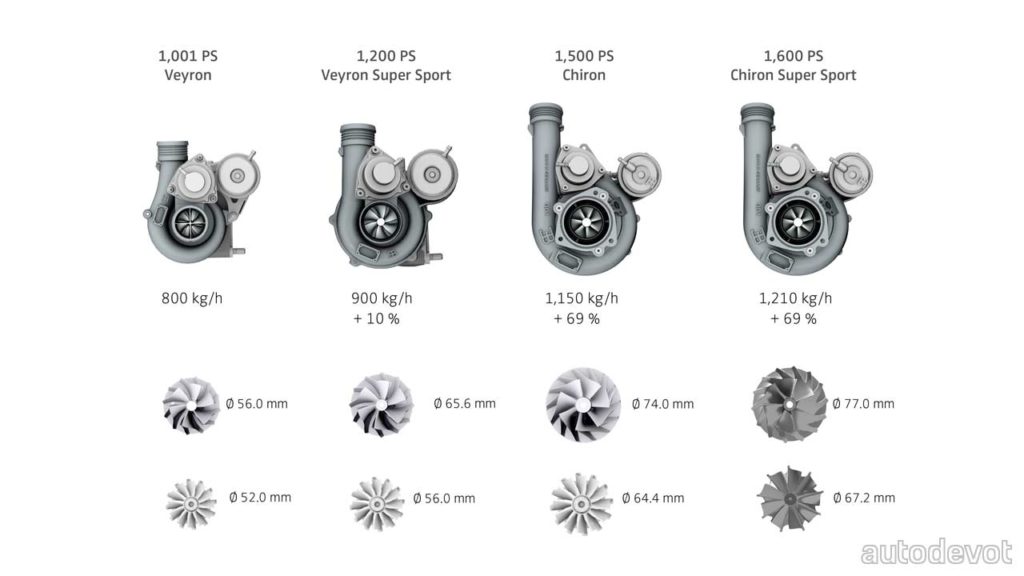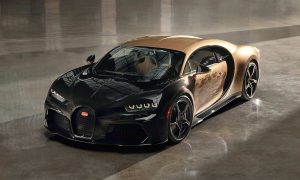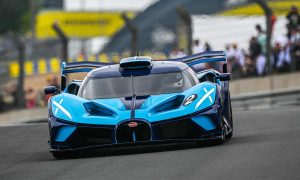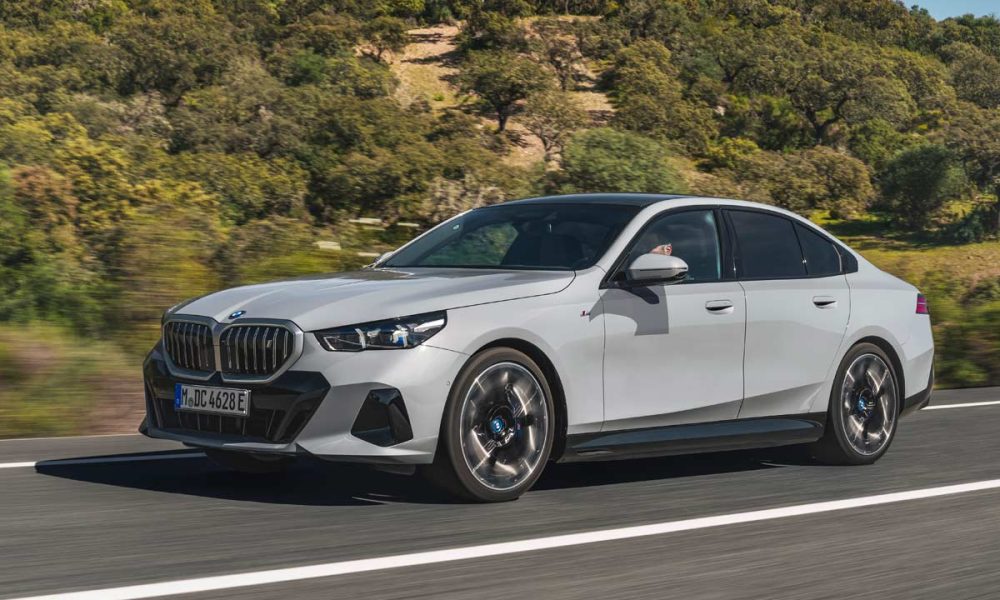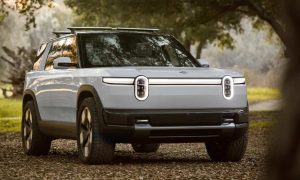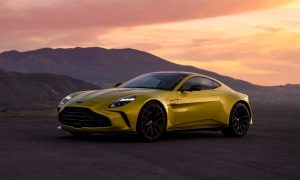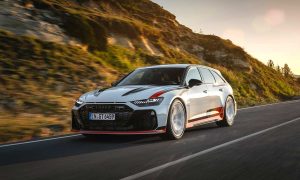As you probably might be aware, the Bugatti Chiron Super Sport and its 490 km/h top speed record-setting predecessor the Chiron Super Sport 300+ feature a heavily reworked body that enables the hypercars to slice through the air as efficiently as possible and achieve those kinda speeds. For those who would like to know more, well, Bugatti is happy to share how the Chiron Super Sport is “Shaped by Speed”.
New air curtains
In order to minimize turbulence on the sides, the team integrated new air curtains at the front, which help guide the air around corners in an optimal way. At the same time, the air curtains also make sure that the airflow follows the body’s contours as closely as possible to stabilize the car. Bugatti said that in order to achieve a perfect airflow, its engineers ran numerous simulations to arrive at the ideal curvature and thickness of the component, as well as the perfect spacing between it and the front section. Additional air outlets at the front wheel arches help balance the aero loads even further.
Airflow through the front section
An ideal airflow over the front of the car is equally important for stability at high speeds. It is also important that an optimal amount of air must pass through the radiator, so it can provide sufficient cooling for the 8.0-litre W16 engine at full load. The airflow through the Chiron Super Sport’s radiator is about 8% higher than that of the Chiron in order to guarantee a perfect air balance. In addition, most of the flow passes the new air curtains at high speed. In top speed mode, the front diffusers are positioned more horizontally and guide less air into the wheel arches.
New wheel arch outlets
Those 30 mm deep cylindrical air outlets are hooked up with a special carbon air-guiding component which ensures optimum airflow while preventing stones from leaving the car. The wings also improve brake cooling. Similar to a chimney, the vacuum caused by the airflow along the car’s body extracts air from the wheel arches. The air is guided through special venting ducts behind the front wheel.
Longtail
One of the key noticeable changes in the Chiron Super Sport’s bodywork is its tail section—called longtail—which has been extended by 25 cm. At high speeds, it ensures that the air flowing along the top and bottom of the vehicle creates a break-away area that is as small as possible. To achieve a balance between downforces and lifting forces, Bugatti precisely aligned the performance of the rear wing and the diffuser, by enlarging the diffuser’s profile. This moves the break-away edge upward, so that the break-away area of the tail section is minimized. This significantly reduces the losses generated in this area, leading to much lower wind resistance—which is what slows the car down.
Thanks to the elongated tail section, the rear diffuser gains about 23 mm in length. To increase the diffuser’s effectiveness and give it more space, the engineers moved the exhaust section from the center to the sides. And, the exhaust outlets are 3D-printed from titanium; the walls are as thin as 0.4 mm, pushing the envelope of what is technically feasible.
Larger rear wing
In handling mode, the blade of the rear wing/spoiler has been extended by 23 mm and thereby gained 8% in size. In top-speed mode, however, the rear wing is retracted almost completely, allowing the car to make full use of its longtail design. In this way, the laminar flow can establish itself across the entire length of the car’s body, until it breaks away at a defined location of the tail section.
Powertrain
Of course, there are modifications to the powertrain as well. The 8.0L W16 motor gets new turbos with a compressor wheel that grew from 74 to 77 mm and the turbine wheel that grew from 64.4 to 67.2 mm. At full load, about 4.8 tons of air flow through the four turbochargers every hour. Other modifications include reinforced pistons, and thanks to a stiffer pressure control spring, the oil pump now supplies more lubricant at a higher pressure to parts like the crankshaft, valves, chain drive, camshaft adjustment and piston cooling. At full load and nominal rpms, more than 140 liters of oil flow through the pump every minute.
The massive engine develops 1,177 kW or 1,600 metric hp—which is an increase of 100 metric hp. For more agility, the engine delivers an additional 300 rpm and a higher power plateau at 7,100 rpm, up from 7,050 rpm. 1,600 Nm (1,180 lb-ft) of torque is available from 2,250 to 7,000 rpm, compared with 6,000 rpm before.
New gear ratio
To achieve a top speed of 440 km/h (273 mph), the 7-speed double-clutch gearbox employs a new gear ratio. The 7th gear is 3.6% longer compared with the Chiron. Due to the increased performance, at full load and full acceleration, the gearbox shifts from 6th to 7th gear at 403 km/h (250 mph). The Chiron Super Sport accelerates from 0 to 200 km/h (124 mph) in 5.8 seconds and reaches 300 km/h (186 mph) in 12.1 seconds. The difference is even greater for the acceleration from 0 to 400 km/h (249 mph), a speed which the Chiron Super Sport achieves in 28.6 seconds. This makes it 12%, or 4.0 seconds, faster than a Chiron. To make traction interruptions during shifting imperceptible to driver and passengers, the boost pressure control has been refined for the individual gears.

Leave a Reply
Note: Comments that are unrelated to the post above get automatically filtered into the trash bin.
